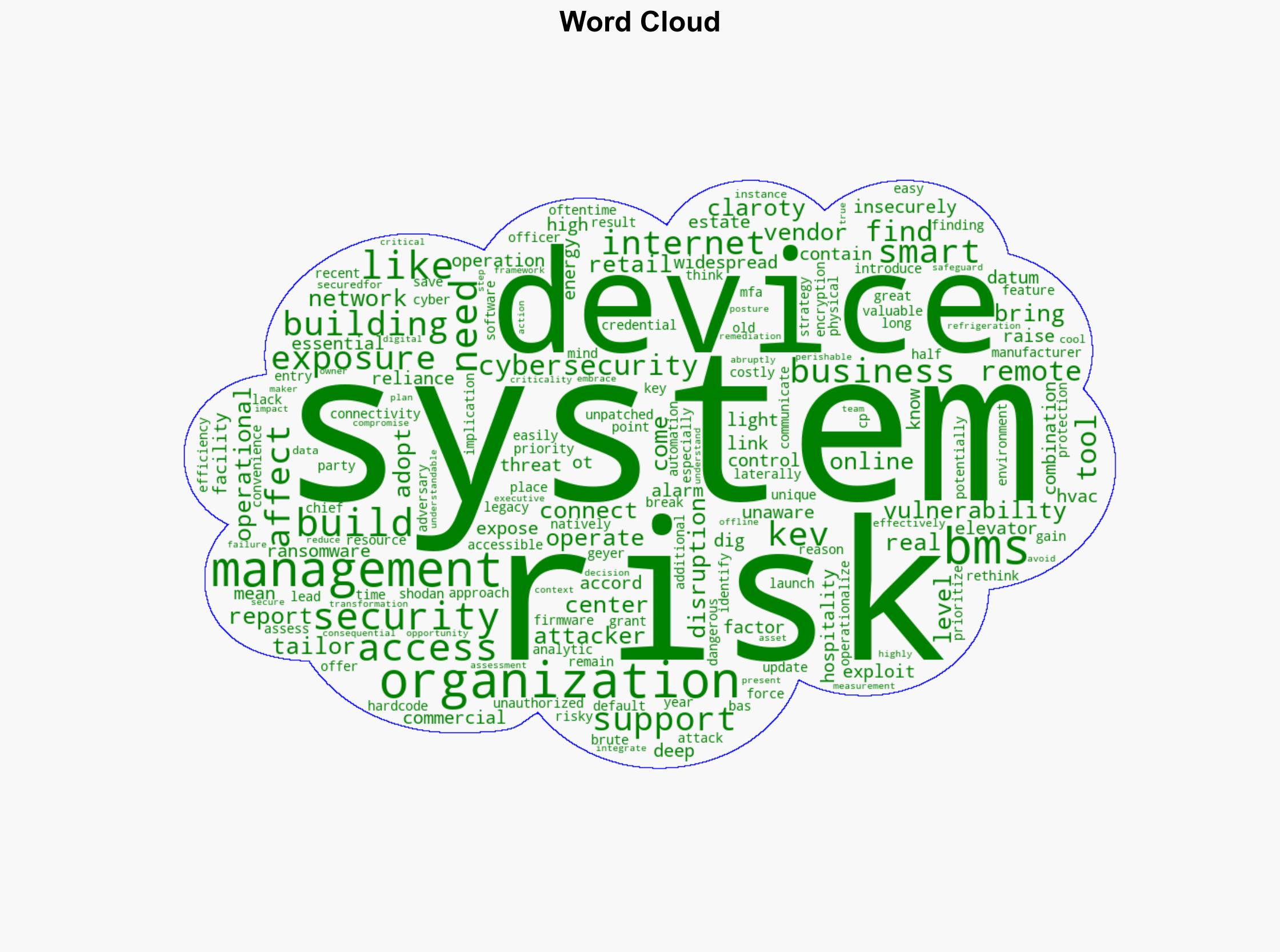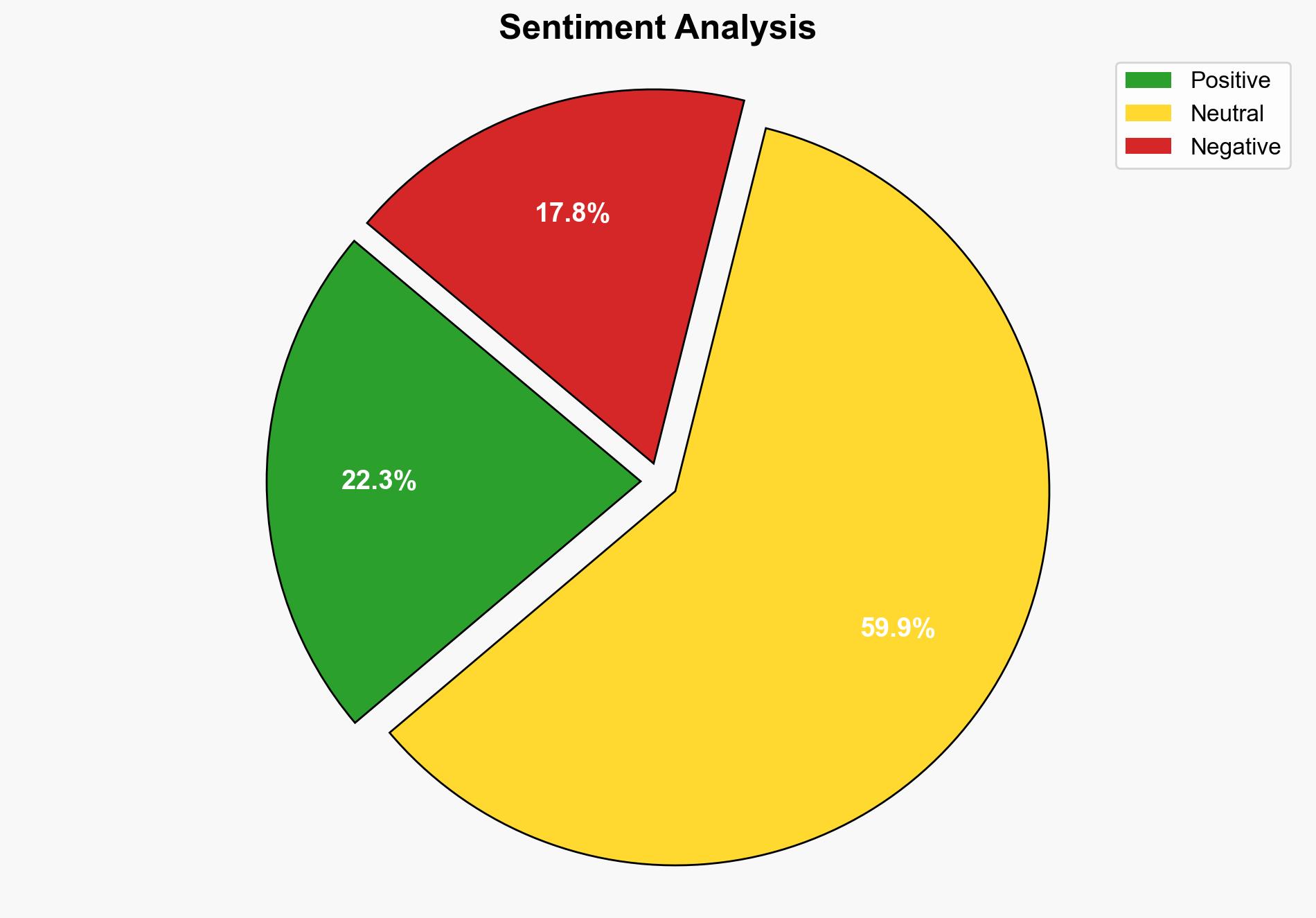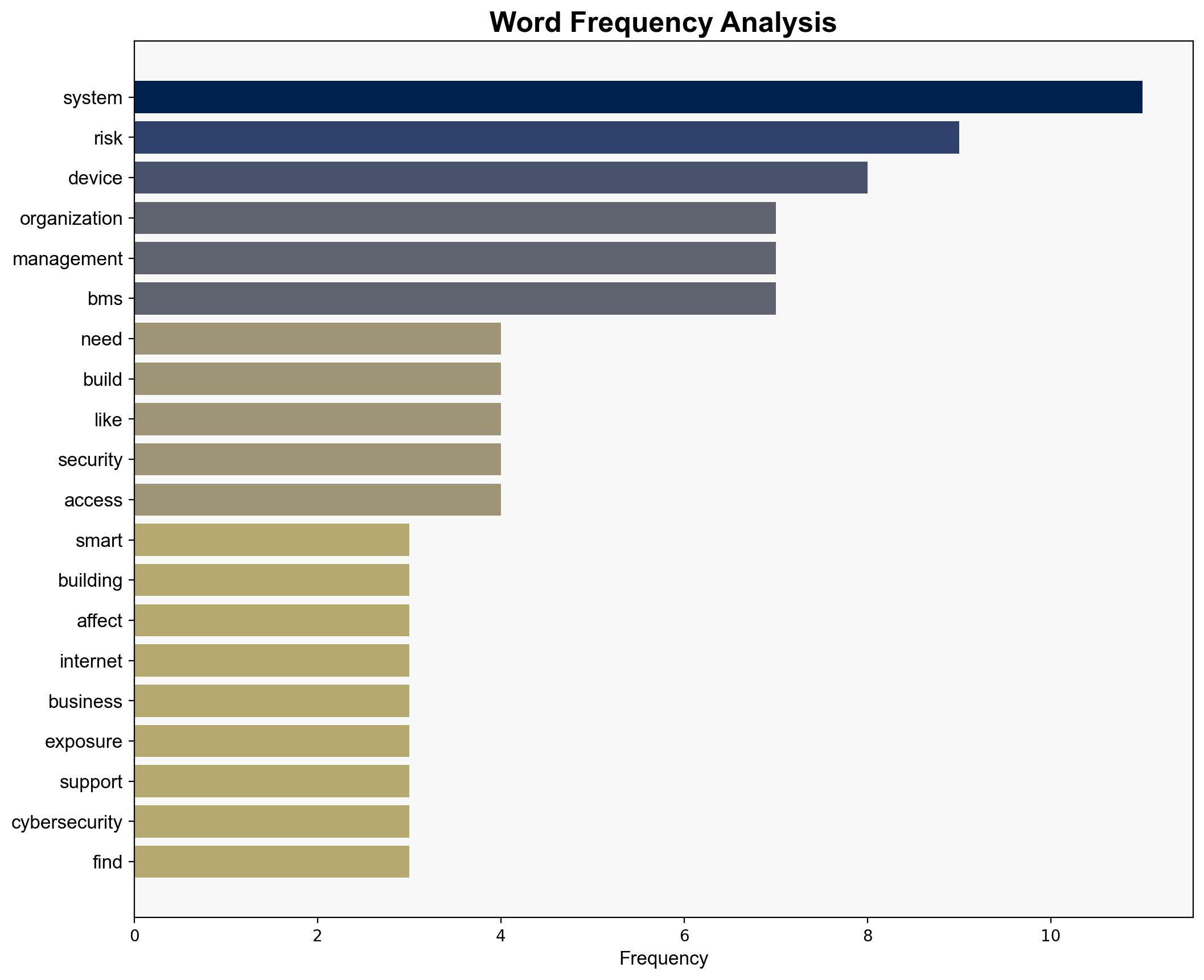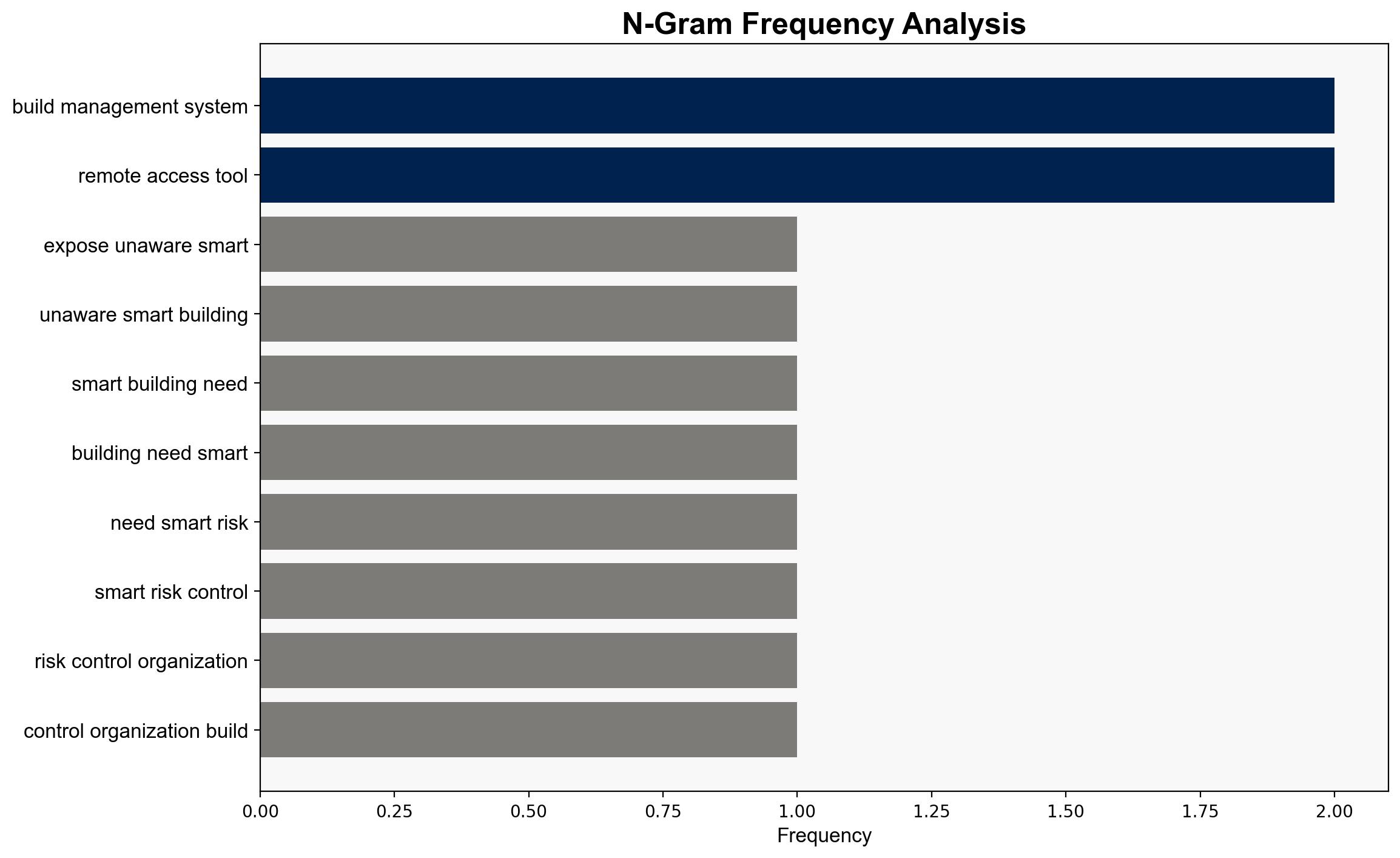Exposed and unaware Smart buildings need smarter risk controls – Help Net Security
Published on: 2025-07-04
Intelligence Report: Exposed and Unaware Smart Buildings Need Smarter Risk Controls – Help Net Security
1. BLUF (Bottom Line Up Front)
Smart buildings are increasingly vulnerable due to inadequate risk controls in their Building Management Systems (BMS). The reliance on outdated systems and insecure internet connections exposes these infrastructures to cyber threats, including ransomware. Immediate action is required to enhance cybersecurity measures, prioritize risk management, and secure critical operational systems.
2. Detailed Analysis
The following structured analytic techniques have been applied to ensure methodological consistency:
Adversarial Threat Simulation
Simulations reveal that cyber adversaries can exploit default credentials and unpatched vulnerabilities in BMS, leading to unauthorized access and potential network breaches.
Indicators Development
Monitoring systems for anomalies, such as unusual access patterns or system disruptions, can provide early warnings of potential cyber threats.
Bayesian Scenario Modeling
Probabilistic models suggest a high likelihood of cyberattacks targeting BMS, particularly through internet-connected systems lacking encryption.
Network Influence Mapping
Mapping relationships within BMS networks highlights critical nodes that, if compromised, could lead to widespread operational disruptions.
3. Implications and Strategic Risks
The increasing integration of BMS with internet connectivity poses significant cyber risks. A successful attack could disrupt essential services such as HVAC, lighting, and security systems, leading to economic losses and safety hazards. The lack of encryption and reliance on legacy systems exacerbate these vulnerabilities, potentially affecting sectors like commercial real estate, retail, and data centers.
4. Recommendations and Outlook
- Implement robust cybersecurity frameworks tailored to the unique needs of cyber-physical systems.
- Regularly update and patch BMS software to mitigate vulnerabilities.
- Adopt multi-factor authentication and encryption for remote access tools.
- Scenario-based projections suggest that without intervention, the risk of significant cyber incidents will increase. Proactive measures can reduce this risk and safeguard critical infrastructure.
5. Key Individuals and Entities
Grant Geyer
6. Thematic Tags
national security threats, cybersecurity, counter-terrorism, regional focus




